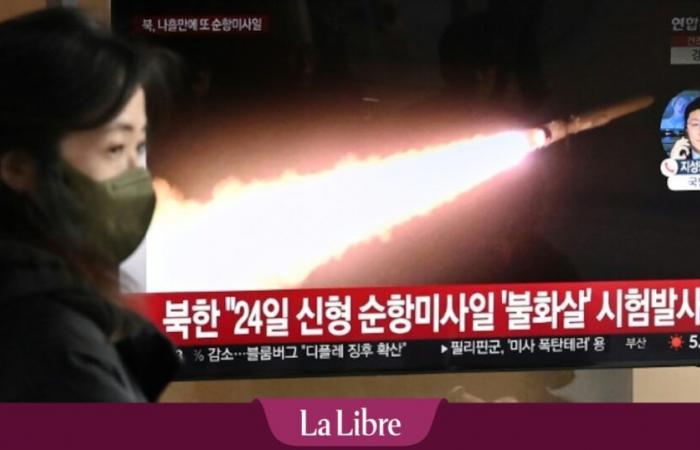This shot highlights how the presence of North Korean troops represents a “dangerous expansion of war” in Ukraine, in the words of NATO Secretary General Mark Rutte, who sees “a threat to Indo-Pacific and Euro-Atlantic security”. According to experts, North Korea is one of the most militarized countries in the world.
Arm the entire population
The most closed country in the world, the Democratic People’s Republic of Korea is secretive by nature. Primarily concerned, the Republic of Korea (South) keeps a watchful eye on this neighbor with which it has been at war since 1950. The South Korean Defense Ministry’s 2022 White Paper provides estimates of the size and organization of the North Korean army.
Pyongyang’s state propaganda, it reads, calls for “arm the entire population” North Korea and to defend its leader, Kim Jong-un, like “guns and human bombs”. This translates into millions of reservists, estimated at a third of the country’s 25.8 million inhabitants. The service army would number 1.3 million. Military service lasts eight to ten years for men aged 17 to 30, five years for women.
The United States, Japan and South Korea: a common understanding in a strategic region under high tension
South Korean Defense Minister Kim Yong-hyun viewed the sending of North Korean troops to Russia with pride: “They do not wear their own uniforms, but disguise themselves in Russian uniforms, have no operational control and only obey Russian orders. North Korea does not send troops, but rather mercenaries who serve as cannon fodder.”
Unknown abilities
Contempt aside, the operational capacity of North Korean soldiers raises doubts. His true abilities remain a mystery. Apart from a few border crossings with the south of the peninsula, North Korea has not participated in a major conflict since the Korean War seventy years ago.
The backbone of the North Korean army is made up of its special forces, numbering 200,000 soldiers, better equipped, better trained and better fed than their colleagues. In the past, these units have carried out incursions into South Korea. The best known occurred in 1968, when a commando managed to approach the residence of the South Korean president.
Antiquated weapons and food shortages
Several decades of international sanctions have ravaged the economy of North Korea, which suffered from a famine in the 1990s. Despite maintained relations with China and Russia, conventional weapons and equipment are said to be the bulk of it. vestiges of the Soviet era. Pilots in its air force rarely fly due to lack of kerosene. If we are to believe the testimonies of deserters who went to the South, most troop soldiers suffered from chronic food shortages and corruption was endemic.
North Korea’s annual military spending would cost a quarter of its gross domestic product. The military operates its own vast network of farms, trading companies, fisheries and mining operations. According to the South Korean Defense Ministry’s 2022 white paper, “North Korea would have a stock of reserve equipment sufficient for one to three months in the event of war..
Around thirty nuclear warheads?
The main threat posed by North Korea is of another nature, as the missile launch of October 31 and the comments made the next day by its chief diplomat remind us. She declared from Moscow that her country would “strengthen (its) strategic offensive nuclear weapons and […] improve (its) nuclear response capacity”.
In 2017, after its sixth nuclear test and the launch of an intercontinental ballistic missile, North Korea declared having completed its “state nuclear capacity”. After Kim Jong-un came to power in 2011, the country focused its resources on developing its nuclear and missile capabilities. Its estimated reserves of plutonium (70 kg, according to South Korea) suggest that it has around thirty nuclear weapons.
The range of its intercontinental ballistic missiles theoretically allows it to strike the United States or Europe. According to North Korea, the missile tested on October 31 is a solid-fuel intercontinental ballistic missile of a new model, the Hwasong-19.







